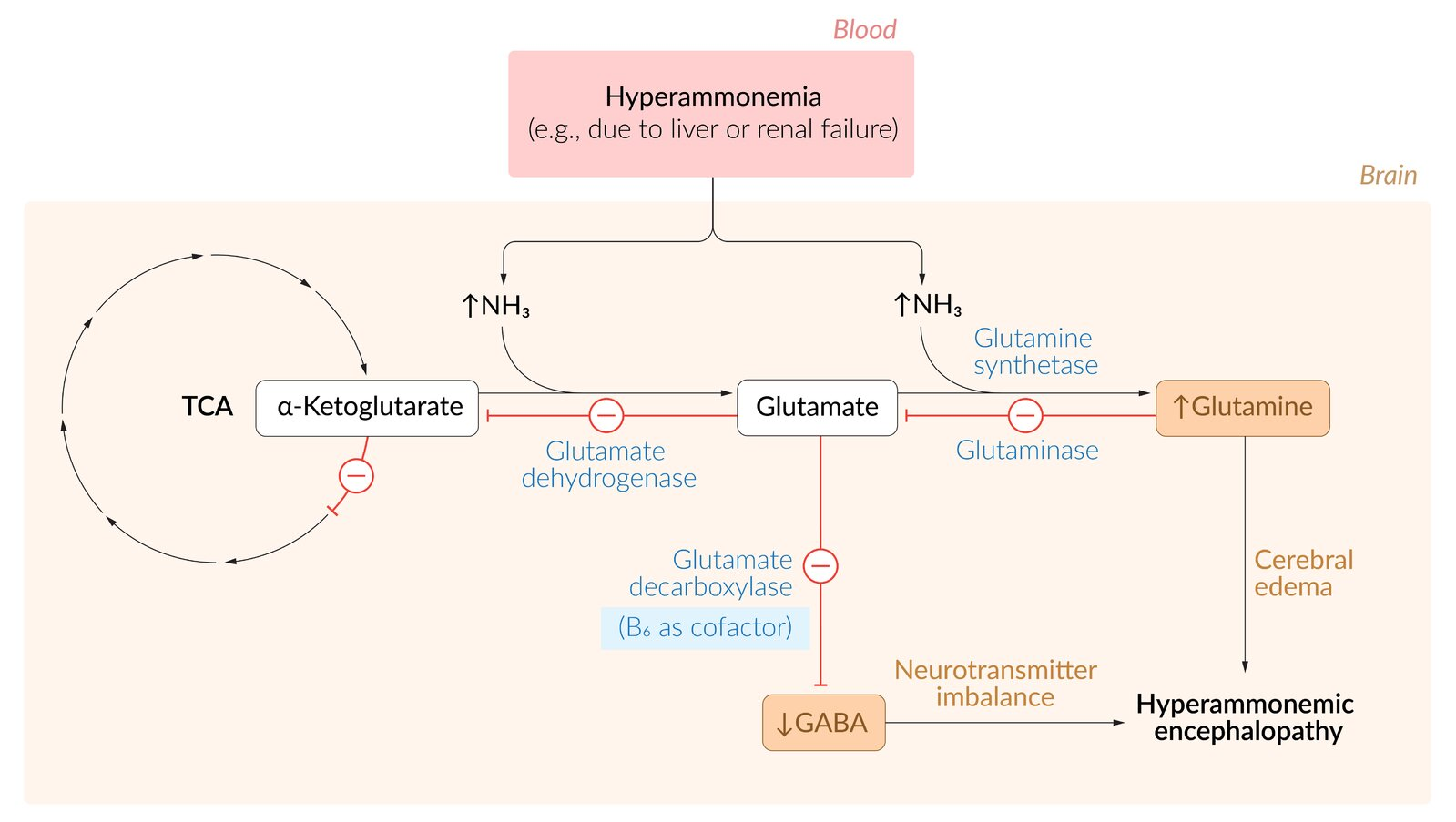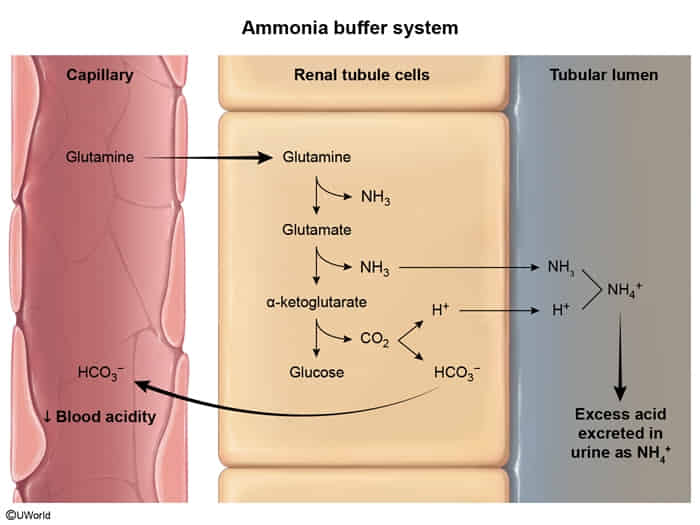See Catabolism of amino acids for details
- Normal intracranial ammonia physiology
- Glutamate and ammonia exist in a chemical equilibrium with glutamine, mediated by the enzyme glutamine synthetase.
- GABA is mainly synthesized from glutamate via the enzyme glutamate decarboxylase
- Pathophysiology


- Elevated serum ammonia levels disrupt the balance between glutamine, glutamate, α-ketoglutarate, and GABA through the actions of glutamate dehydrogenase and glutamine synthetase, resulting in increased glutamine and decreased glutamate levels → low GABA synthesis and GABAergic tone → typical features of hyperammonemic encephalopathy:
- Excess glutamine → osmotic damage to astrocytes → cellular swelling and dysfunction → cerebral edema
- Astrocytes’ function is to remove excess neurotransmitters, i.e. converting glutamate (primary excitatory neurotransmitter) to glutamine
- Imbalance of the neurotransmitters → Inhibition of excitatory neurotransmission and activation of inhibitory neurotransmission
- Excess glutamine → osmotic damage to astrocytes → cellular swelling and dysfunction → cerebral edema
- Low α-ketoglutarate → inhibition of TCA cycle
- Elevated serum ammonia levels disrupt the balance between glutamine, glutamate, α-ketoglutarate, and GABA through the actions of glutamate dehydrogenase and glutamine synthetase, resulting in increased glutamine and decreased glutamate levels → low GABA synthesis and GABAergic tone → typical features of hyperammonemic encephalopathy:
- Etiology
- Hereditary: most often in children but heterozygotes can present as older children or adults
- Urea cycle disorders, especially ornithine transcarbamylase deficiency
- Organic acidemias: most commonly methylmalonic acidemia
- Hereditary: most often in children but heterozygotes can present as older children or adults